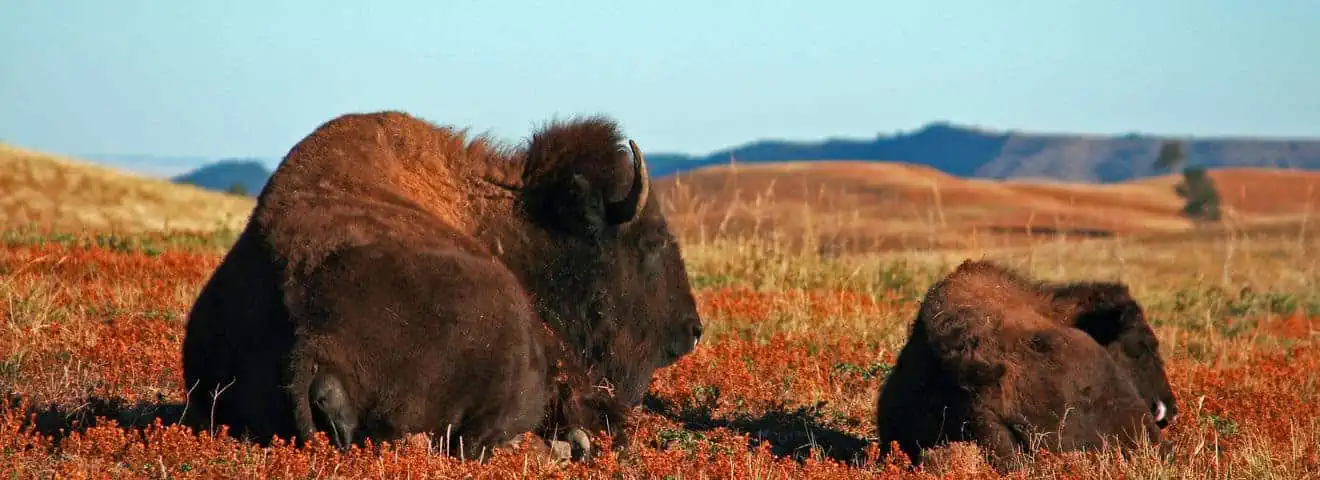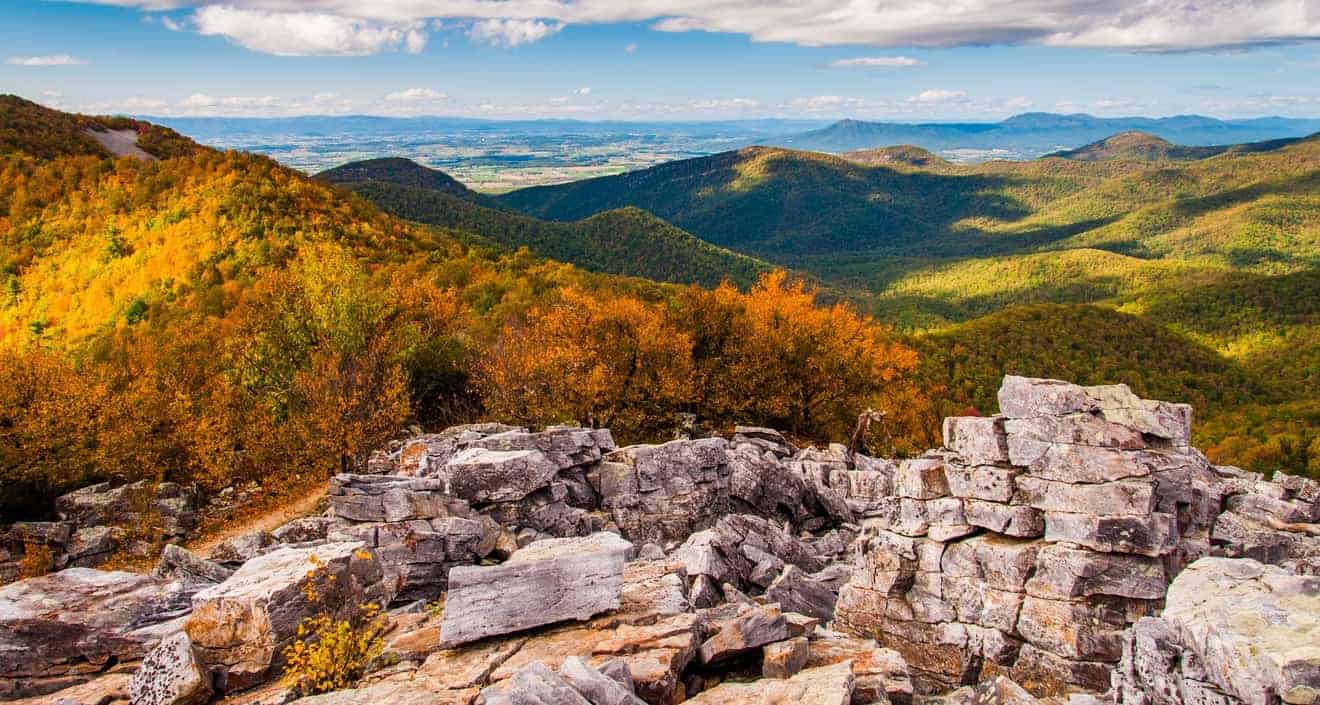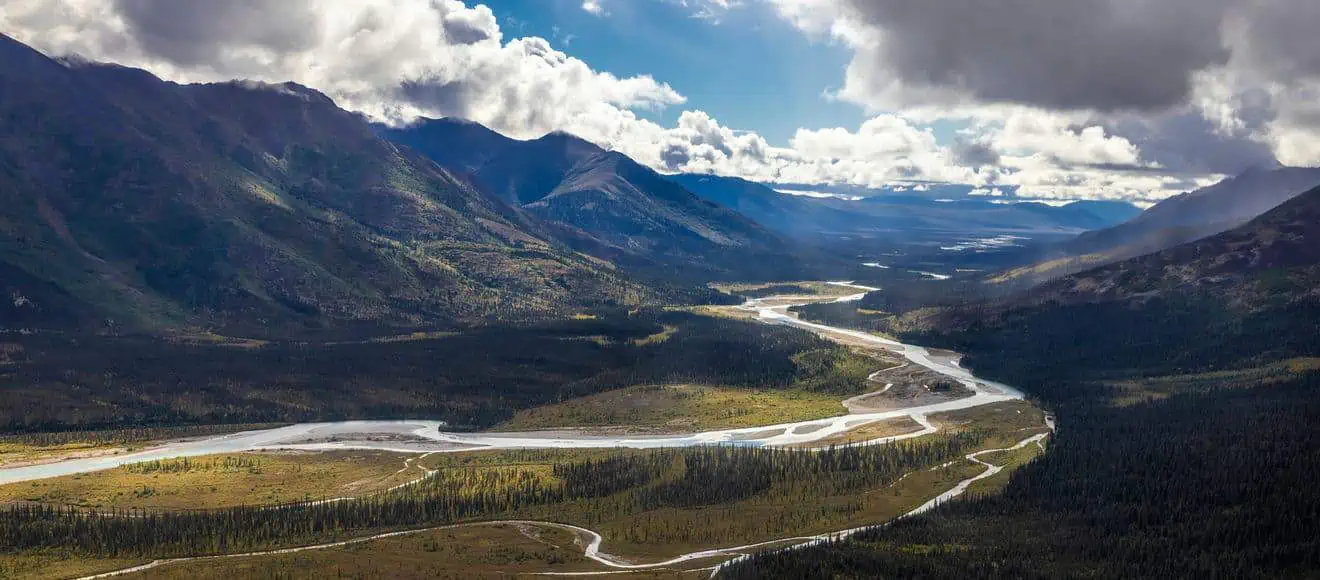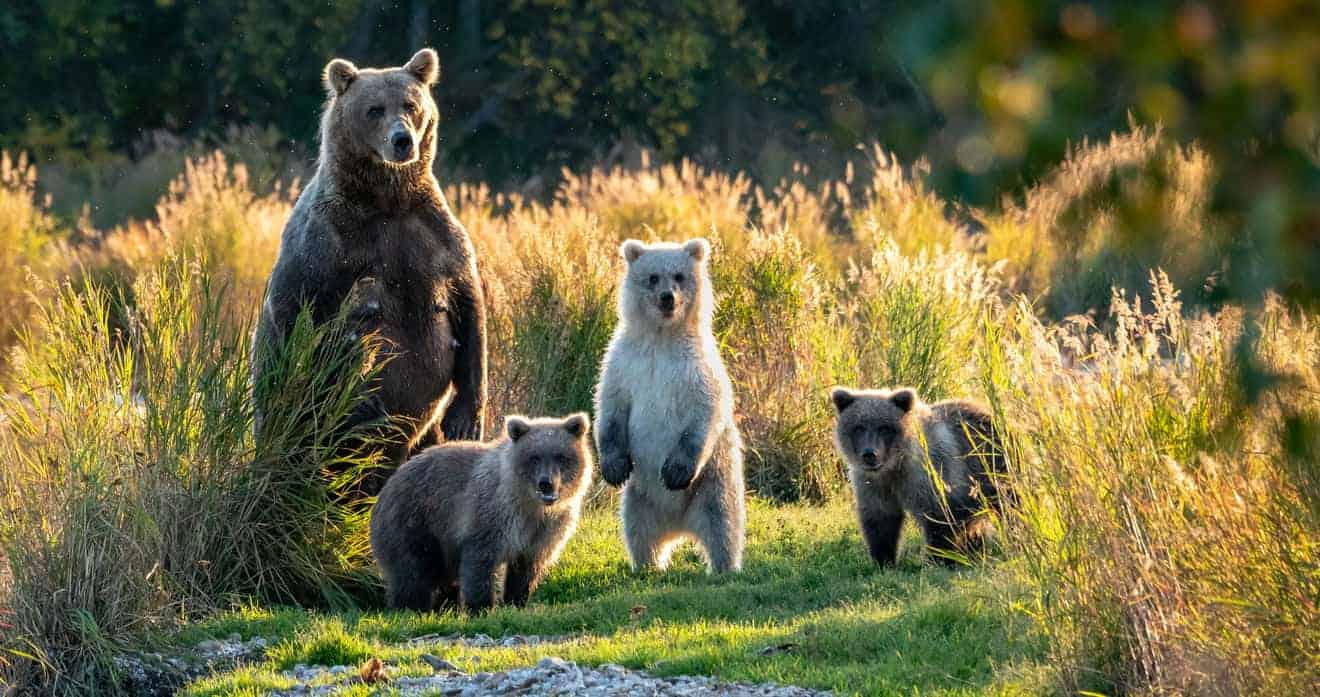Some of the largest caves in America stretch for miles beneath the vast prairies of South Dakota, not far from the Black Hills and the Badlands. In this labyrinth of tunnels and caverns, you’ll find unique geological formations, while on the surface, bisons graze, and you can encounter numerous wildlife.
Let’s delve into the exploration of Wind Cave and its natural park.
Wind Cave National Park Information
Wind Cave National Park is one of the earliest national parks in the United States, to be precise, it was the sixth, and it’s the first cave designated as a national park.
Opened in 1903, it gets its name from the constant movement of air in its underground passages. This cave appears to “breathe” because of the difference in air pressure and small openings that cause the air movements giving this unique characteristic to Wind Cave.
The Lakota Sioux tribe had already spoken of “a hole that breathes air.” This place was considered sacred by the Lakota and they called it Washun Niya. In Lakota legends, there are stories of Tokahe, the first human, emerging from this cave. It is such a symbolic place for the Native Americans that it has given rise to stories about the origin of their people.
The first settlers to document the cave were the Bingham brothers, Tom and Jesse, in 1881. It’s said that Tom peered into a hole, and the wind coming out of it blew his hat away. In 1889, the South Dakota Mining Company explored the cave in search of precious minerals but didn’t find any. However, they recognized its potential as a tourist attraction.
It’s not just the wind that makes this cave interesting; after all, there are many other natural cavities where the same phenomenon occurs. What makes it unique is the presence of calcite formations called “boxwork.” It’s a curious honeycomb-like structure formed when certain sedimentary rocks mineralize in fractures, becoming more resistant to weathering in these areas. Ninety-five percent of the world’s boxwork formations are found in this cave.
Wind Cave is also the third longest cave in the United States, after Mammoth Cave in Kentucky and Jewel Cave, which is also located in South Dakota, not far away. But in the park, it’s not just the cave. Below the surface lies this fascinating natural cavity, while on the surface, vast prairies are home to bison, elk, mountain lions, bobcats, and many other animals.
How to Get There
Wind Cave National Park is located in South Dakota, in the southwestern part of the state, near the borders of Wyoming and Nebraska.
It falls within the hilly region of the Black Hills National Forest, and the nearest town is Hot Springs, which is only a 15-minute drive along US-385. Just follow this road until you find the turnoff for the visitor center on Wind Cave Road. If you’re coming from Hot Springs, you’ll find it on the left.
Hours of Operation and Admission
Entrance to the park is free. However, there are paid tours with different prices. Below are the tour prices for adults (ages 16 to 61), but discounts are available for children and seniors. The most up-to-date prices can be found on the official website.
- Garden of Eden Tour: $14 ($7 for ages 6-15 and over 62)
- Natural Entrance Tour: $16 ($8 for ages 6-15 and over 62)
- Fairgrounds Tour: $16 ($8 for ages 6-15 and over 62)
- Candlelight Tour: $16 (no discounts)
- Wild Cave Tour: $45 (no discounts)
- Accessibility Tour: $6 ($3 for ages 6-15 and over 62)
The park is open 24 hours a day, year-round, but the Visitor Center hours vary by season. In spring, summer, and fall, it’s open from 8 AM to 6 PM, while in winter, it’s open from 8 AM to 4:30 PM. The only days it’s closed are New Year’s Day, Thanksgiving, and Christmas.
Things to Do at Wind Cave National Park
While most visitors come to this national park for Wind Cave, with its countless tunnels and unique geological formations being the most popular attraction, the park is also accessible on the surface, offering the opportunity to encounter a wide variety of wildlife.
The Cave

The main attraction of the park is the one that gives it its name: Wind Cave. As mentioned earlier, what makes this cave unique is the presence of the so-called boxwork formations, of which it holds the world record. But inside Wind Cave, you can also find many fossils because 350 million years ago, it was covered by the sea: shell fragments transformed into limestone fossils, while mineral deposits formed the basis for what would become boxwork formations.
The sea retreated and returned to cover the area multiple times. The alternating between saltwater and freshwater flow led to the formation of cavities and the creation of the curious geological formations that make this cave different from many others. The known labyrinth of caves extends for nearly 150 miles, making Wind Cave the third-longest cave in the United States.
Wildlife

One of the best places in America to see free-roaming bison is Wind Cave National Park. There are only four herds of genetically pure American bison in all of North America: in Yellowstone National Park, the Henry Mountains in Utah, Elk Island in Alberta, Canada, and right here in Wind Cave National Park.
So, bison are the park’s main wildlife attraction, but they are not the only ones. Among the mammals, you can also find large elk and smaller badgers and skunks, as well as weasels and the rare endangered black-footed ferrets. Among the top predators are mountain lions, bobcats, foxes, and coyotes. The bird species are also diverse, with the most interesting being the American crane, which is endangered, and this is one of the few places where you can spot it.
Planning a visit
As I mentioned, the park has two levels: the prairies and the caves that wind beneath them. Access to the caves is through a series of guided tours, while when you’re on the surface, you don’t need to book anything, and you can move freely on the roads and marked trails. Given the presence of wildlife, it’s advisable to inquire at the visitor center before embarking on a hike.
Guided tours

The network of tunnels and caves that make up the vast Wind Cave can be explored with a series of guided tours, each of different lengths, leading to different areas of the underground complex. All tours start from the visitor center, where you can also purchase tickets.
During the high season and especially on weekends, it’s more likely that some tours will sell out quickly, so it’s recommended to book online (at this page) to avoid arriving and finding everything fully booked. Here are all the available tours:
- Garden of Eden Tour. This is the basic tour, covering 0.6 miles with 150 steps and lasting 1 hour. It’s the least physically demanding and allows you to see the main geological formations of the cave, starting with the boxwork. (Base ticket: $14).
- Natural Entrance Tour. Covering 0.4 miles with 300 steps, this 1 hour and 15-minute tour is suitable for families with children. Compared to the Garden of Eden Tour, it also includes a visit to the natural entrance of Wind Cave, the main cave opening. (Base ticket: $16).
- Fairgrounds Tour. Among the three main tours, this one is the most challenging. Although it covers approximately 0.62 miles, it involves descending and ascending in an elevator. During the tour, you’ll need to climb 450 steps, and it lasts 1 hour and 30 minutes. The increased physical effort is rewarded with a more comprehensive visit, allowing you to admire a greater number of geological formations and reach the larger rooms of the cave. (Base ticket: $16).
- Candlelight Tour. This tour is only available in the summer, covering 0.62 miles and lasting 2 hours. It’s quite challenging but has the unique feature of being conducted by candlelight, making the visit truly atmospheric. Participants must be at least 8 years old, and there is a limit of 10 people per tour. (Base ticket: $16).
- Wild Cave Tour. Also available only in the summer, this is the longest and most challenging tour. It covers approximately 2.49 miles and can last up to 4 hours. You’ll navigate uneven terrain with low ceilings, often crawling or sliding through narrow passages. It’s not suitable for everyone, but those who embark on this adventure get to appreciate the cave’s geology to the fullest. (Base ticket: $45).
- Accessibility Tour. This tour is entirely accessible and designed for people with disabilities. It involves using an elevator for descent and ascent, followed by wheelchair-friendly trails. The tour lasts about half an hour. (Base ticket: $6).
Scenic drives

The park is crisscrossed by four roads: two run through the western part from north to south, and the other two traverse the eastern part, also from north to south. The central area of the park is only accessible on foot via several hiking trails, which I’ll discuss shortly.
The most significant roads are in the western part, where the visitor center is located. The primary park entrance is along US-385, which cuts through the southwestern area of the park. From US-385, you can also take the short Wind Cave Road, connecting the main road to the visitor center and campground. Branching off to the northwest from US-385 is the second scenic road, SD-87. This road can be followed northward to exit the park and reach the adjacent Custer State Park.
In the eastern part, there are two other scenic roads to explore, but these are unpaved. Therefore, it’s advisable to drive them only if you have a suitable vehicle and when it’s not raining. The NPS 5 (Red Valley Road) runs from north to south, cutting through the eastern part of the park, and at one point, it branches off to the northeast with NPS 6.
Wind Cave National Park Trails
To delve into the heart of the park, there’s no better way than to put on a pair of comfortable shoes and embark on a nature hike. There are trails of varying lengths and difficulty levels, suitable for those with limited time and experienced hikers looking to spend more hours walking through these vast prairies interspersed with forests. Here are some of the main hiking routes:
- Prairie Vista Trail. Starting from the Visitor Center, you can take this short loop that’s about 0.87 miles long, entirely flat, to get a taste of the typical prairie landscape in the area. Starting here.
- Rankin Ridge Trail. This is a short trail branching off from the main road in the northwestern part of the park. It leads to a scenic tower, from the top of which you can enjoy panoramic views of the prairies and perhaps spot bison from above. It’s about 1 mile long with only a 246 feet elevation gain and takes about half an hour to complete. Starting here.
- Wind Cave Canyon Trail. Stretching approximately 3.6 miles round trip with a 213 feet elevation gain, this trail passes through Wind Cave Canyon, located in the center of the park. It’s one of the more interesting routes to explore. Starting here.
- East Bison Flats Trail. This longer route (about 9.9 miles round trip with an elevation gain of around 1,410 feet) extends into the southwestern part of the park, allowing you to venture into the prairies where bison roam. You can also opt to hike only a portion of it. Starting here.
- Boland Ridge Trail.For those looking to explore less-traveled areas, consider this trail in the northeastern part of the park. It begins from the NPS-5 unpaved road and reaches the eastern boundaries of the park. The round-trip distance is approximately 4.8 miles with an elevation gain of around 820 feet. Starting here.
Where to Stay Near Wind Cave National Park
In the park, there are no accommodations available, only a camping area called Elk Mountain Campground. It is open year-round, but restroom facilities are operational only in the summer. You can find more information on the official website.
For lodging near the park, a great option is Hot Springs. You can stay at the Hills Inn, a simple two-star hotel with a good value for your money, perfect for a stopover during a road trip.
Slightly farther away but offering a wider range of accommodations is the town of Custer, located north of the park. Here, I recommend the Chief Motel if you want to save on lodging while ensuring a good stay. It’s a well-maintained two-star motel with a pool. Another no-frills motel that’s perfect for a road trip stopover is the Rocket Motel. For a higher-end option, you can consider the Bavarian Inn, a charming three-star hotel with two pools, indoor and outdoor.







